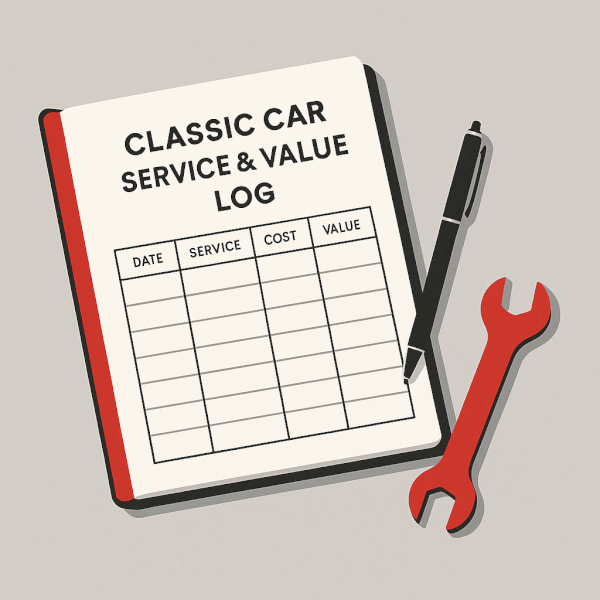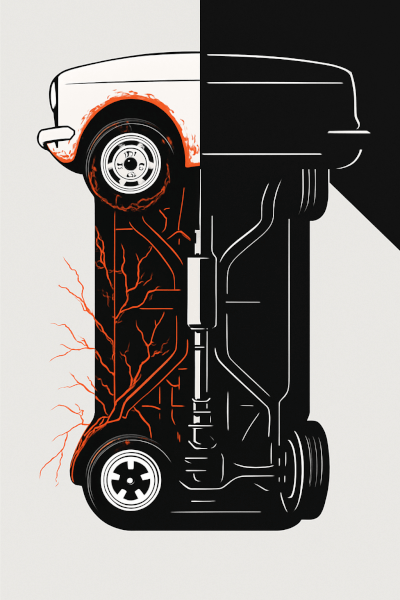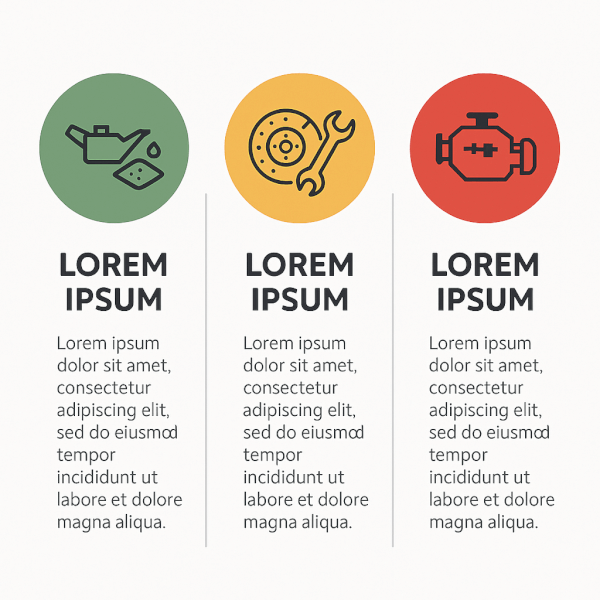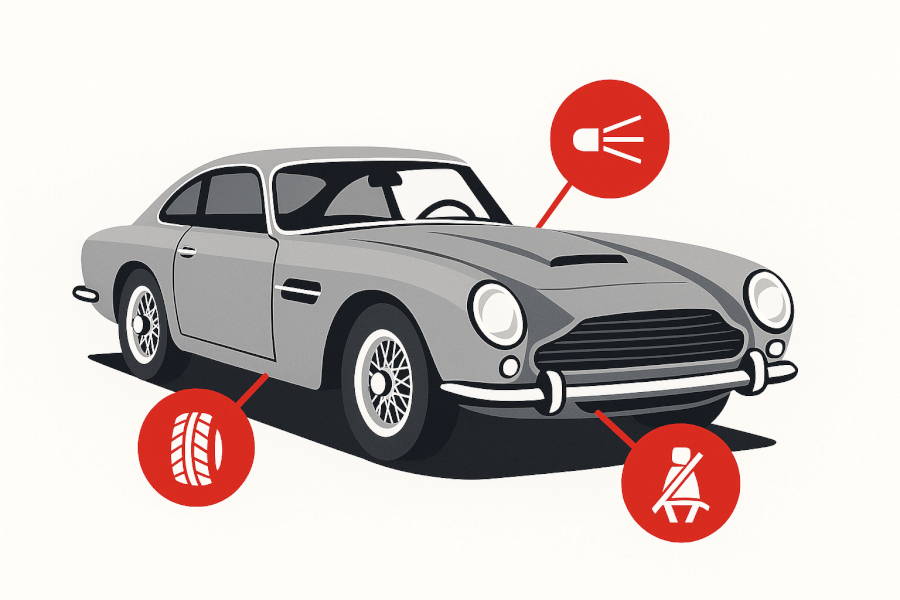Hello and welcome to the SAS podcast, where we believe owning a classic car should be a joy, not a burden. I’m your host, and today we’re tackling a topic that every owner faces: servicing.
We’re going to reframe servicing. Forget thinking of it as a costly chore. We’ll show you how to see it as your single most powerful strategic tool for protecting your investment, ensuring your safety, and preserving your car’s legacy. Here at SAS, we’re bringing 40 years of hands-on automotive experience to this conversation, so we know the pitfalls and the prizes.
I’ll never forget the time I saw a beautiful Jaguar E-Type lose half its value overnight due to a patchy service history. It was mechanically sound, but the lack of proof, the absence of a story, made buyers nervous. We’re here to make sure that doesn’t happen to you.
Today, we’ll cover the financial power of documentation, how to prevent problems before they start, the great debate of DIY versus the pros, and finally, a checklist for pure road-ready confidence.
The financial imperative: turning service history into your greatest asset
This is where we address the heart of the matter: how paperwork can be more important than polish. Meticulous documentation is the single best way to increase classic car value.
Why a stack of receipts is more valuable than a new coat of paint
Meticulous documentation is tangible proof of care. It’s the narrative of your car’s life, showing every oil change, every part replaced, and every inspection. This story removes a potential buyer’s biggest fear: uncertainty. When you remove uncertainty, you build trust, and trust directly translates to a higher resale value.
Imagine two identical cars at auction. One has a shoebox of random receipts. The other has a chronological binder with every single action documented. The second car will always command a premium. That price difference isn’t for the car; it’s the price a buyer is willing to pay for peace of mind.
Introducing the ‘classic car service & value log’

We believe you should move beyond a simple folder of receipts. We propose a structured log that tracks every single touchpoint. This log becomes the cornerstone of your car’s provenance.
Your log should include columns for:
- Date: When the work was done.
- Mileage: The exact mileage at the time of service.
- Work Performed: A clear description of the job (e.g., “Engine oil and filter change”).
- Parts Used: Specific part numbers and brands are crucial here.
- Cost: A transparent record of investment.
- Provider: Who did the work (e.g., “DIY” or “SAS Automotive”).
Citing the experts on preservation
You don’t have to take our word for it. Authorities like Hagerty and Haynes Publishing consistently emphasize that a car’s provenance and history are key drivers of its value. As they detail in their guides on classic car maintenance basics, a well-documented history is non-negotiable for preserving your classic car as an investment.
Proactive preservation: preventing costly failures and age-related decay
Preventative classic car care is your best defense against both sudden failures and the slow march of time. A little foresight can save you thousands and keep your car on the road where it belongs.
The three-figure fix that prevents a five-figure failure
Many of the most catastrophic failures in classic cars begin as small, easily preventable issues. Investing a small amount now is insurance against a massive bill later.
- Correct Fluids: Many older engines use flat-tappet camshafts that require zinc (ZDDP) for protection. Using modern oil without a ZDDP additive can destroy a camshaft, leading to an engine rebuild. An $15 bottle of additive can save you from a $10,000 problem.
- Rubber Hoses: Coolant hoses and fuel lines perish from the inside out. They may look fine, but after decades, they become brittle. A $50 set of new coolant hoses is cheap insurance against a $5,000 engine overheat and rebuild.
- Belts: A visual check for cracks on the fan belt and alternator belt takes 30 seconds and can prevent you from being stranded.
Combating the silent killer: your strategic plan against rust

Rust is the disease that every classic car owner fears. The most common rust traps are areas that hold moisture: wheel arches, rocker panels (sills), and floor pans. The only way to win the war on rust is to prevent it from ever starting. Your strategic plan for classic car rust prevention should include:
- Proper Storage: A dry garage is good; one with a dehumidifier is even better.
- Thorough Cleaning: After a drive, especially in damp conditions, wash and thoroughly dry the car, paying special attention to the undercarriage and wheel wells.
- Modern Prevention: Use modern, high-quality rust prevention sprays or coatings on the underbody and inside cavities. As the experts at Haynes explain when detailing how to go about protecting a classic car from rust, once rust takes hold, the battle is already uphill.
The importance of regular exercise
Letting a classic car sit is one of the worst things for it. Seals dry out and crack, leading to leaks. Fluids settle and can cause internal corrosion. Brakes can seize. A short drive of 15-20 minutes once or twice a month is enough to keep everything lubricated, charged, and in working order.
The owner’s dilemma: a practical guide to DIY vs. professional servicing

Knowing when to grab the spanners yourself and when to call in a specialist is a key part of smart ownership. We’ve developed a simple framework to help you make the right call every time. Base your decision on three factors:
- The cost of the tools: Do you need a four-post lift and a specialized diagnostic machine?
- The risk of catastrophic failure: If you get this wrong, could it cause major engine damage or a safety incident?
- The availability of parts and information: Can you easily find the right parts and a reliable guide to do the job?
Green light tasks: high satisfaction, low risk (perfect for DIY)
These are the jobs that help you bond with your car. They require basic tools, have a low risk factor, and deliver immense satisfaction.
- Oil and filter changes
- Spark plug and air filter swaps
- Basic cleaning, polishing, and detailing
- Battery maintenance and charging
Yellow light tasks: proceed with caution
These are for the more experienced home mechanic. They often require specialized tools like a torque wrench and a greater understanding of mechanical systems. The safety stakes are higher.
- Brake pad and rotor changes
- Coolant system flushes
- Replacing simple gaskets (e.g., valve cover)
- Carburetor tuning
Red light tasks: protecting your investment (call a professional)
These are jobs where the risk of catastrophic failure or personal injury is too high. Getting these wrong can destroy your car’s value or, worse, make it unsafe.
- Internal engine or transmission work
- Complex electrical diagnostics and repairs
- Major suspension or steering overhaul
- Bodywork and paint
A good mechanic will respect the work you do yourself and be there for the big jobs. Being honest about your own limits is a sign of a smart owner, not a failed one.
The road-ready confidence checklist: prioritizing safety in your classic

The ultimate goal of all this work is to enjoy your car with confidence. That confidence comes from knowing it’s not just beautiful, but safe.
Before every drive: the 5-minute safety check
Make this a habit. It’s a simple, memorable check you can do in the time it takes for the engine to warm up.
- Tires: Check pressures and look for any obvious damage or bulging.
- Fluids: Check the brake fluid reservoir level and do a quick check under the car for any new drips.
- Lights: Have a partner confirm your headlights, indicators, and especially your brake lights are working.
- Wipers: If there’s any chance of rain, make sure they work.
Essential systems that demand regular inspection
Beyond the pre-drive check, these safety-critical systems need a closer look as part of your regular classic car service schedule.
- Brakes: The pedal should feel firm and consistent. Any sponginess or pulling to one side needs immediate investigation. Look for fluid leaks at the master cylinder and at each wheel.
- Steering: There shouldn’t be excessive play or “slop” in the steering wheel. Listen for any clunking or grinding noises when turning.
- Suspension: Visually inspect bushings for perishing or cracks. Listen for knocks over bumps, which can indicate wear.
The U.S. government’s own NHTSA provides NHTSA vehicle safety checks for a reason—these systems are critical. On an older car, that vigilance is doubly important.
Upgrading for modern safety without sacrificing classic character
You can improve safety without harming your car’s value by choosing sensible, reversible upgrades.
- Fit modern radial tires for vastly improved grip and handling.
- Upgrade to brighter halogen or even LED headlights for better visibility.
- Install 3-point seatbelts for a huge leap in occupant safety.
A word from our sponsor
At SAS, we share your passion. We see these cars as rolling works of art, and our mission is to be your trusted partner in preserving them. Whether you’re a seasoned DIYer who needs a hand with the “red light” tasks or you want a team with 40 years of expertise to manage your car’s entire preservation strategy, we’re here to help. We speak your language—the language of automotive history.
Answering your most common classic car questions
How often should my classic car be serviced?
Most classic cars should be serviced at least once a year or every 3,000 miles, whichever comes first, due to the nature of older materials and lubricants. Even if the car isn’t driven much, engine oil, brake fluid, and other fluids degrade over time and need to be replaced annually to prevent internal corrosion and system failure.
How does regular maintenance affect classic car value?
Regular, documented maintenance directly increases a classic car’s value by providing proof of care, which builds buyer confidence and justifies a premium price. This detailed history, or “provenance,” removes doubt for a potential buyer, assuring them the car has been cherished and not neglected, making it a less risky and therefore more valuable asset.
What are the most common mechanical problems in classic cars?
The most common problems are typically related to perishable components and lack of use, including oil leaks from dried seals, electrical faults from corroded connections, and fuel system issues from old gasoline. Brakes can also seize and rubber suspension components can perish, leading to poor handling and safety concerns.
How can I preserve my classic car as an investment?
To preserve your classic as an investment, prioritize originality, maintain a comprehensive service history log, and focus on proactive prevention of rust and mechanical wear. Store the car properly, exercise it regularly, and address small issues before they become large, expensive problems.
Conclusion: your car, your legacy
So there you have it. Servicing isn’t just about nuts and bolts; it’s the framework for protecting your passion. By keeping meticulous records, preventing problems, knowing your limits, and prioritizing safety, you transform a chore into a strategy.
You’re not just a classic car owner; you’re the custodian of a piece of automotive history. And smart maintenance is how you protect that legacy.
To help you get started, we’ve created the very thing we talked about today. Head over to to download your free, comprehensive ‘Classic Car Service & Value Log’ template. It’s our gift to you.
We’d love to see pictures of your pride and joy. Tag us on social media and tell us the one DIY task you love the most. Until next time, happy motoring.
